Doing a list often involves leaving out a lot of good stuff and this was certainly the case with Gotham Calling’s 2020 books of the year… Some great comics didn’t make it to the list because they didn’t fulfil the criteria of being a self-contained one-shot or graphic novel (I’ve already addressed the case of John Constantine Hellblazer); others actually made it at one point but were eventually bumped out by the competition.
They’re nevertheless works that merit the attention of readers who share this blog’s interests, so I’ve compiled an additional, looser list of further twenty cool comics that came out last year. The only strict rule I followed this time around was to leave out comics that merely continued runs that have been regularly going on for years. So, even though we’ve gotten new stories from some of my favorite series out there (Deadly Class, Kaijumax, Stickleback, Stray Bullets), you won’t find them on this list either, as they’re by the same creative teams working the same old magic and I’d rather spotlight new-ish material. My main aim here is to further stress that, although 2020 was a terrible year for the comic book industry, it was still pretty strong when it comes to creative output.
That said, because I’m doing this list alphabetically, I do have to kick things off with a collection of older material…
ABRAHAM STONE
Originally published as three separate volumes in the 1990s, by both Malibu and Marvel’s Epic imprint, Joe Kubert’s noirish neo-western Abraham Stone has now been collected into a single book by Dark Horse. Set in the 1910s, this is a fairly loose saga following the two-fisted adventures of the titular drifter as he moves through New York, Washington, Hollywood, and revolutionary Mexico, encountering plenty of racism, sex, violence, and moral – as well as political – corruption along the way, including the obligatory row of historical cameos (from Charlie Chaplin to Pancho Villa). A founding veteran of the medium (he started working in comics back in the late 1930s/early 1940s!) who continued to produce powerful, original works almost until the end of his life, in 2012, Kubert initially geared Abraham Stone towards the European market, which may explain its particularly sumptuous layouts and ‘adult’ sensibility.
The storytelling is gripping on a moment-by-moment level, not least because of the skilled compositions and moody colors, but the overall narrative is somewhat rushed and uneven. The episodic structure seems essentially designed to enable Joe Kubert to explore specific aspects of this bygone world (America just before he was born) that interested him.
The result is still a treat, though. Abraham Stone provides an absorbing, compellingly harsh look into an era often disregarded in comics, when the motifs of the Old West overlapped with booming industrial modernity, which Kubert manages to render in an attractive way even as he delves into dirt and decadence.
AMERICAN RONIN
Peter Milligan, one of my all-time favorite writers, put out a bunch of stuff in 2020, so he was bound to show up in one of these lists sooner or later… After much hesitation, I didn’t pick his eerily-timed pandemic tale Tomorrow, his bonkers black comedy Happy Hour, or even his 1996 masterpiece Girl (supposedly it has finally been collected into one book, but I can’t find it anywhere, so I’m not sure the book was actually published). Instead, I’m going with the mini-series American Ronin (of which three incredible issues came out in 2020), a cyberpunk thriller about an assassin who uses a form of genetically engineered super-empathy to psychologically manipulate his victims.
On the one hand, this feels like a comic completely in tune with the zeitgeist, what with the plot about corporate espionage involving massive transnational conglomerates and the notion of weaponized empathy touching on so many current debates. It helps that Aco’s and David Lorenzo’s slick artwork and dizzying layouts (especially when depicting the inside of people’s minds), complemented by Dean White’s intoxicating colors, convey an ultra-modern vibe as the action moves from Hong Kong’s skyrises to Rome’s streets and beyond. On the other hand, American Ronin is yet another labyrinthic take on the perennial Milligan theme of identity crisis (in fact, it’s a nice companion piece to Milligan’s brilliant run on Human Target, whose initial mini-series was also edited by Axel Alonso, which may explain the Vertigo sensibility of this new project).
Peter Milligan’s oeuvre can be framed as part of the so-called British Invasion of American mainstream comics in the 1980s/90s, which included the likes of Alan Moore, Grant Morrison, Warren Ellis, Garth Ennis, and Mark Millar. These creators brought to the field in general (and to superheroes in particular) not only a new degree of intelligence and maturity, but also – let us not forget – unprecedented levels of sex and violence. Their approach has become so widespread by now that it’s easy to underestimate how much of a twisted, kinky gonzo read American Ronin is, but make no mistake: it’s still definitely the work of a highly original creative voice who keeps pushing boundaries.
BANG!
I’m a sucker for metafiction, so the notion of Matt Kindt doing a series that kicks off with a spy being recruited by a sci-fi writer to fight ‘a world-wide cabal of fanatic cult-like members’ who believe their world ‘is simply a work of imagination’ seems aimed straight at my pleasure centers. You can add to this the fact that the Bond-like agent (who struggles to conciliate his inconsistent continuity) teams up with a super-powered version of John McClane, a Knight-Rider-by-way-of-Anime knockoff, and an amalgam of classic detectives (from Hercules Poirot to Charlie Chan and Jessica Fletcher). You can spot a bit of Philip K. Dick’s The Man in the High Castle in there as well – not to mention Easter Eggs from Kindt’s previous works – but there is only so much you can take away from a spot-the-reference game… Fortunately, BANG! can also be appreciated as its own thrilling adventure, regardless of all the pop cultural baggage.
Wilfredo Torres’ artwork isn’t particularly showy or groundbreaking, but it suits the material’s pulpy tone, his representational style conveying the necessary clarity and dynamism to secure each action scene’s utter coolness. As for Kindt, he can write this sort of postmodern spy-fi stuff in his sleep by now, but that doesn’t mean he’s coasting. Like in Undone by Blood, we get additional excerpts of engaging prose stories starring each of the main characters. Once again, here is a comic designed to exploit the distinct possibilities allowed by the medium, borrowing key features from both trashy literature and cinematic storytelling. Plus, you can perhaps discern a larger point building up around the edges: while playing around with archetypes, BANG! taps into the age of fake news and alternative facts, where it seems to be getting harder for everybody to distinguish reality from fiction.
BATMAN: UNIVERSE
So many cool comics came out last year that the return of two of my all-time favorite series, Batman: Black & White and The Batman Adventures, didn’t even make the cut of this second list… For a while, despite the shitty artwork, it seemed as if The Batman’s Grave had a shot (2020 may have been the year when Warren Ellis was outed as a douchebag, but he remains one of the wittiest writers in the field). The timing really killed that chance, though: it’s not just that the series leaned hard on the notion of Batman as an über-cop who constantly hands out severe beatings, relishes intrusive surveillance, attacks riots with an urban (bat)tank, and resorts to the most gleeful use of torture this side of Batman: Earth One (somehow, Gordon comes off even worse!); it’s that the plot itself became an abject, charmless right-wing fantasy in which critics of law enforcement were reduced to psychopathic murderers, rioters, and crime lords trying to take over, which was pretty hard to stomach at a time of rampant demagoguery against the ‘defund the police’ demands…
Luckily, as a palate cleanser, 2020 also brough about the collection of Batman: Universe. Don’t get me wrong: this mini-series is an example of boldfaced pandering superhero comics if there ever was one, its story a loose pretext to bring together various DC characters and concepts, piling cameos on top of each other without any apparent purpose other than to elicit brief smiles from fans when their personal favorites show up (even if they’re utterly irrelevant to the plot). Nevertheless, as a fan myself, I can’t pretend I’m entirely immune to this sort of strategy, at least not when it’s accompanied by particularly pleasing visuals and a sufficiently entertaining voice. Both are the case here, so the pleasure goes beyond mere recognition and into the curiosity of seeing familiar motifs handled by these specific creators.
The title refers to the cosmic properties of the Fabergé egg (i.e. the MacGuffin) Batman is chasing, but I guess it has a double meaning, since this book is essentially a tour of the DC Universe by Nick Derington and Brian Michael Bendis, showcasing the company’s coolest figures and settings, the appeal largely resting on how invested you are in each of those elements (Derington, Bendis, DCU). But be warned: although Bendis can do subtle characterization, he’s in dumb blockbuster mode here, his dialogue made almost entirely out of quips, albeit with a solid batting average and a winking complicity (Batman: ‘I rely on too much tech too often.’; Alfred: ‘Yes. Everyone says so.’).
While I don’t mind Bendis’ banter-heavy style, there’s no doubt his scripts are pretty unbalanced, with ultra-decompressed sequences (we get a full page devoted to the Batmobile parking) punctuated by spectacular moments (which are a must, given how little substance there is all around). Yet Derington’s splendid artwork – nicely served by Dave Stewart’s buoyant colors – smooths things out with a contagious vitality that makes every page a blast while consolidating the series’ joyful attitude. I wouldn’t want every comic to be this frothy, but Batman: Universe is the sort of breezy read that does just the trick when I feel like a quick fix of geeky fun.
BIG GIRLS
A damn glorious schlockfest. Big Girls’ high concept was enough to ferociously grab my attention, as the series repurposed imagery from 1950s’ B-movies about giant women and kaiju monsters into a full-throttle action powerhouse set in a dystopic future. Jason Howard’s execution delivered the necessary momentum, both in terms of story (the worldbuilding is so much fun that I won’t spoil it here) and in terms of visuals… It’s not just that Howard fills each page with forceful scratches and rousing energy; it’s that his layouts and choice of angles keep playing with readers’ perceptions, constantly throwing us off-balance.
This is clearly a passion project, with Jason Howard doing everything except lettering the comic. Yet Howard hasn’t just crafted an efficient vehicle to draw the hell out of massively destructive fights set against collapsing cityscapes – in its own wacko, ecstatic fashion, Big Girls offers a spirited take on gender dynamics (what if our survival as a species depended on strong girls?) and social inequality (including the way everything is geared towards protecting the 1%), not to mention resource shortages and ecological devastation. Don’t expect a thoughtful dissection of these themes, though… Rather, they’re more like the gravity core of a vibrant science fiction yarn that just keeps spitting out ‘holy fuck’ moments.

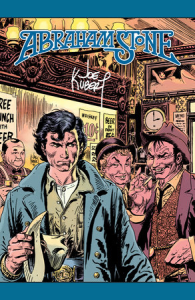
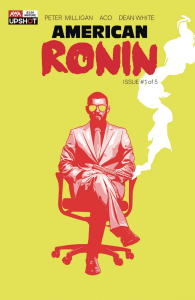
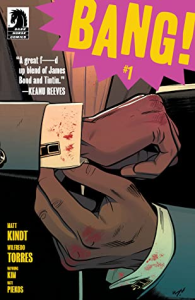
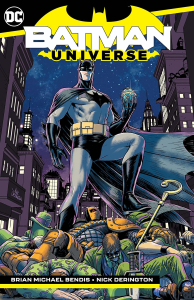
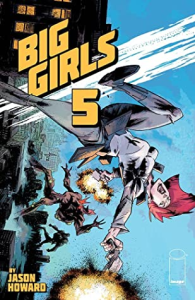
“(2020 may have been the year when Warren Ellis was outed as a douchebag, but he remains one of the wittiest writers in the field)”
Thanks for being able to separate the man from the work, unlike almost all other current critics out there.